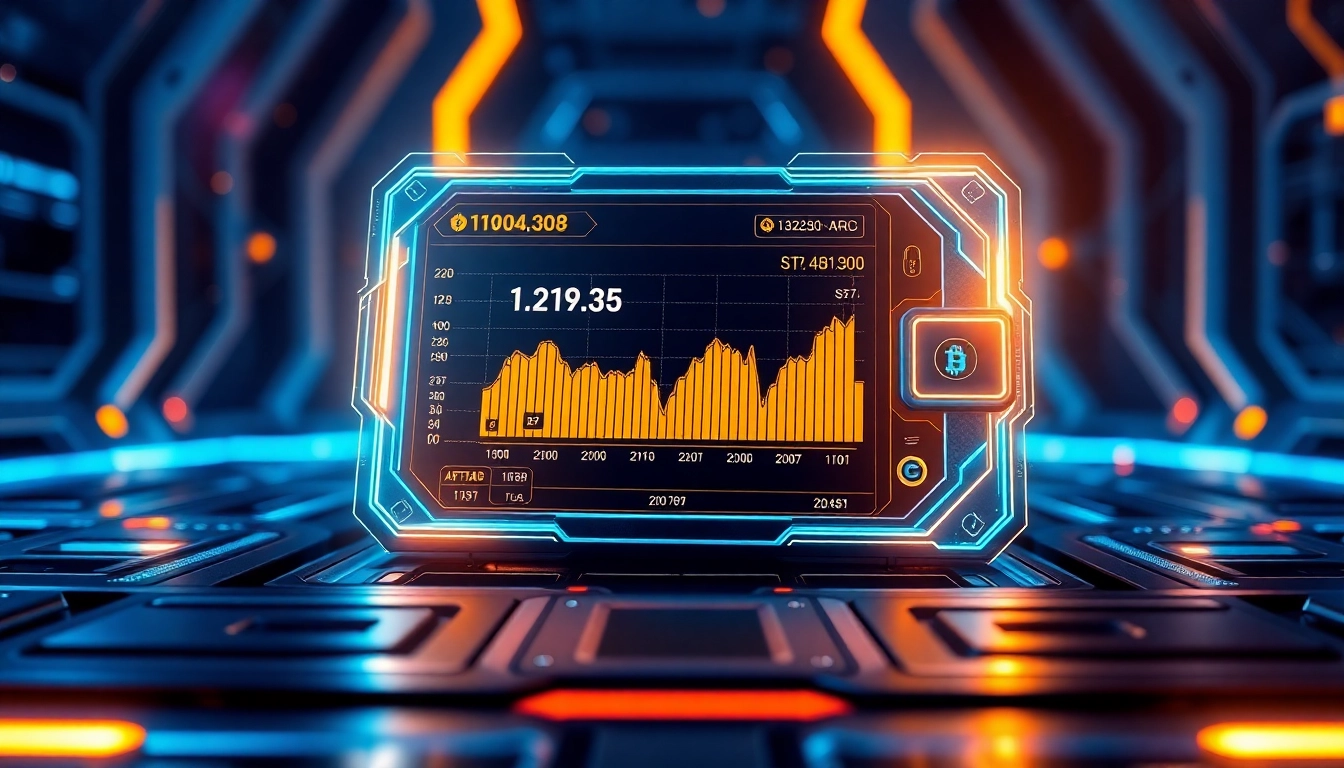Introduction to Trading View: The Essential Platform for Traders
In the fast-paced world of financial markets, having access to real-time data, advanced analysis tools, and an active trading community can make all the difference. This is where trading view has established itself as a leading platform, offering traders and investors a comprehensive environment for market analysis, charting, and social interaction. Whether you’re a seasoned trader or just starting out, understanding how to leverage Trading View’s robust features can significantly enhance your trading strategies and results.
What is Trading View and Why It Matters
Trading View is more than just a charting platform; it is a multifaceted social trading network that combines powerful visualization tools with collaborative features. Originating as a web-based service, it allows users to analyze global markets—including stocks, forex, cryptocurrencies, commodities, and indices—on a single platform. According to its official site, Trading View is “where the world charts, chats, and trades markets,” emphasizing its integration of analysis and social interaction.
The platform’s significance lies in its ability to democratize access to sophisticated financial analysis, bringing professional-grade tools to individual traders globally. Its real-time data streams, customizable charts, and collaborative environment enable users to identify opportunities, refine strategies, and share insights seamlessly. This combination makes Trading View an indispensable tool for modern traders aiming for informed decision-making.
Key Features and Tools for Market Analysis
Advanced Charting and Technical Indicators
At its core, Trading View offers highly customizable charting capabilities, supporting multiple chart types such as candlestick, line, bar, and more. Users can overlay thousands of technical indicators, including moving averages, RSI, MACD, Bollinger Bands, and Fibonacci retracements. The platform’s scripting language, Pine Script, allows traders to create custom indicators and strategies, enhancing analytical precision.
Real-Time Data and Alerts
Access to real-time market data is critical, and Trading View excels in delivering live updates across global exchanges. Users can set alerts based on price levels, indicator signals, or patterns, ensuring they never miss vital market movements—key for timely trade entries and exits.
Social Integration and Community Insights
One unique aspect of Trading View is its active community, where traders share ideas, discuss technical setups, and publish market analyses. This collaborative environment fosters learning, provides diverse perspectives, and often leads to valuable trading ideas derived from collective intelligence.
How Traders Use Trading View for Real-Time Data
Real-time data access is a cornerstone of effective trading. Traders utilize Trading View’s live charts to monitor multiple markets simultaneously, gaining instant visibility into price movements. For example, a forex trader can track EUR/USD, USD/JPY, and gold futures side-by-side, alerting them to breaking trends or reversals. Additionally, the platform’s alert system provides notifications via email, SMS, or within the app, allowing traders to react swiftly to market developments without constantly monitoring screens.
Setting Up Your Trading View Environment for Optimal Results
Customizing Charts and Indicators
Optimization begins with tailoring your workspace. Users can customize chart layouts, color schemes, timeframes (from seconds to months), and indicator combinations to suit their trading style. Effective customization aids in pattern recognition and reduces visual clutter, making analysis more precise.
Creating Watchlists and Alerts
Smart watchlists enable traders to monitor specific assets effortlessly. Coupled with alerts on price or indicator conditions, they facilitate disciplined trading by automating the recognition of key signals. For example, setting an alert for a break above a resistance level helps traders prepare for potential entry points.
Integrating Trading View with Other Platforms
For seamless workflow, Trading View integrates with various brokers and trading platforms, enabling direct execution from the charts or synchronized account management. APIs and third-party plugins extend its functionality further, helping traders automate and streamline their strategies.
Advanced Trading View Techniques to Enhance Your Trading Strategy
Using Technical Analysis and Pattern Recognition
Advanced traders employ chart patterns—head and shoulders, double tops/bottoms, flags, and pennants—to forecast market movements. Trading View’s pattern recognition tools and educational resources help identify these setups swiftly, enabling more informed trading decisions.
Implementing Automated Trading and Scripts
Pine Script allows traders to develop automated strategies and backtest their systems historically. This capability reduces emotional trading and provides a clear performance record, fostering continuous improvement.
Sharing and Collaborating with the Trading Community
Publishing charts and ideas publicly or privately fosters shared learning. Engaging with the community exposes traders to different approaches and enhances analytical skills. Some users gain reputation points, building credibility within the platform.
Best Practices for Monitoring Markets and Managing Risks
Analyzing Multiple Markets Simultaneously
Effective traders utilize Trading View’s multi-chart layout to observe several assets concurrently, identifying correlations and diverging signals. This holistic view supports better risk management and strategic planning.
Setting Strategic Entry and Exit Points
By combining Fibonacci levels, trendlines, and technical signals, traders can establish concrete entry and exit criteria, minimizing subjective decision-making and optimizing profitability.
Utilizing Alerts to Stay Ahead of Market Movements
Preemptive alerts based on technical indicators or price thresholds ensure traders stay proactive. For instance, detecting a bullish crossover early allows for timely positioning ahead of a strong upward move.
Measuring Success and Improving Your Trading View Experience
Tracking Performance Metrics
Utilize platform features or external tools to analyze your trading performance—profitability, win rate, risk-reward ratio. Regular review highlights strengths and areas for improvement.
Adapting Strategies Based on Data Insights
Data-driven adjustments, such as refining indicator settings or modifying entry criteria, lead to more consistent results. Keeping a trading journal integrated with Trading View can assist in this process.
Staying Updated with Trading View Updates and Community Insights
Regularly exploring new features, attending webinars, and engaging with community forums keep your skills current, unlocking new potential strategies and tools.



